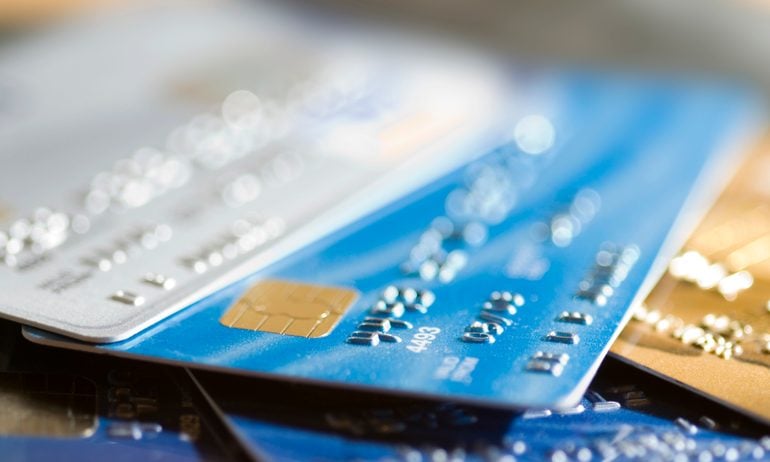Should I Sign the Back of My Credit Card? Is It Safe to Sign?
The same advances in technology that make signatures irrelevant for purchases also make it safer to sign your card.

Many or all of the products on this page are from partners who compensate us when you click to or take an action on their website, but this does not influence our evaluations or ratings. Our opinions are our own.
Signatures are not nearly as important to the credit card system as they used to be. At one time, every card purchase was verified with a signature (at least in theory). Nowadays, though, having to sign for a transaction is the exception rather than the rule.
And yet there's still a space for you to sign your name on the back of your credit card.
Some people don't sign their cards at all, for fear that doing so could expose them to fraud. That particular fear is a relic of the old system, as is the practice of writing "SEE ID" on the signature panel on the back of the card, another attempt to deter fraud.
In reality, it's safe to sign the back of your credit card, if that's what you choose to do. Credit card fraud happens, of course, but it's not because of the signature on the card.
Were you a victim of credit card fraud? Here are resources: |
Why signatures once mattered
Long before cards had EMV chips — long before they even had information encoded on a magnetic stripe — the signature was the primary method of authenticating a credit card transaction. It was about as secure a system as you might imagine.
Here's how it worked ... in theory: When a new credit card came in the mail, you were supposed to immediately sign the panel on the back. Then, when you used the card to buy something, you had to sign the sales slip. The merchant was supposed to compare the signature on the slip with the signature on the card. If they matched, the transaction was good to go. If they didn't match, the merchant would reject the transaction. Signatures that didn't match were a sign that the card had been stolen.
Some people went so far as to write "SEE ID" on the panel. This was supposed to prompt the merchant to ask for the customer's driver's license, and they would check the signature on that against the signature on the sales slip. When a thief using a stolen card couldn't produce an ID with a matching name, the fraud would be exposed.
In practice, of course, merchants almost never checked signatures. And even when they did — well, it's not like the cashier at your local supermarket was a trained handwriting examiner.
Go ahead and sign your card
Most credit card purchases today are either handled through a chip reader, which authenticates the transaction with a code generated by the chip, or conducted online, where signatures are impossible to require anyway. All the major credit card payment networks — Visa, Mastercard, Discover and American Express — no longer require signatures.
Individual merchants, however, are free to require signatures. For that reason, card issuers continue to provide the signature panel — on the off chance that someone is checking. In fact, Visa and Mastercard have guidelines that say unsigned cards are technically invalid. So stay on your issuer's good side and sign your card.
Practically speaking, the same advances in technology that have made credit card signatures obsolete have also mostly eliminated whatever risk once existed in signing the back of your card. No one is checking because no one needs to check. Transactions are verified electronically, rather than by a clerk studying whether the loop on the "P" in the signature on the slip matches the one on the card.
If your card is lost or stolen, you can usually report it as such and have it deactivated so no one could use it even if they tried. Even if you don't immediately notice it missing, your legal liability for fraudulent charges is capped — and most major issuers have zero-liability policies anyway.
Stolen or leaked credit card information does lead to fraud, but the weak link in the process is no longer the signature.
Staying safe
The bottom line is that you’re likely not gaining much by writing “SEE ID” on the back of your plastic. It’s probably best to stay in the good graces of your card issuer and payment processor and stick to signing.
However, there are steps you can take to minimize the risk of identity theft. To keep your payment information safe, follow these tips:
Don’t let others use your card
Don’t leave your card unattended
Check your online account regularly and be on the lookout for unauthorized charges
Report unfamiliar transactions immediately
Consider freezing your credit if you’re concerned that your personal information might have been exposed
Find the right credit card for you.
Whether you want to pay less interest or earn more rewards, the right card's out there. Just answer a few questions and we'll narrow the search for you.

